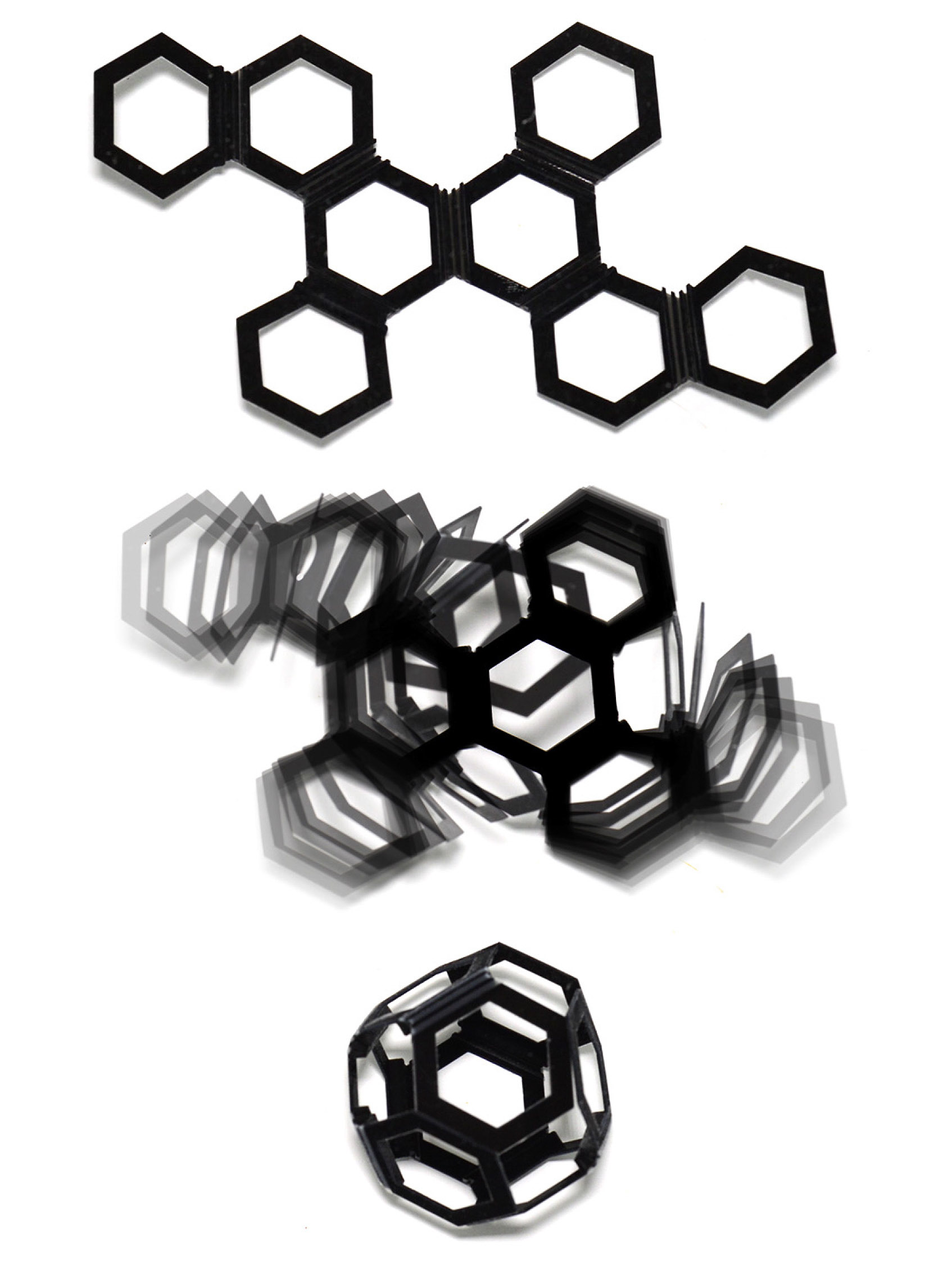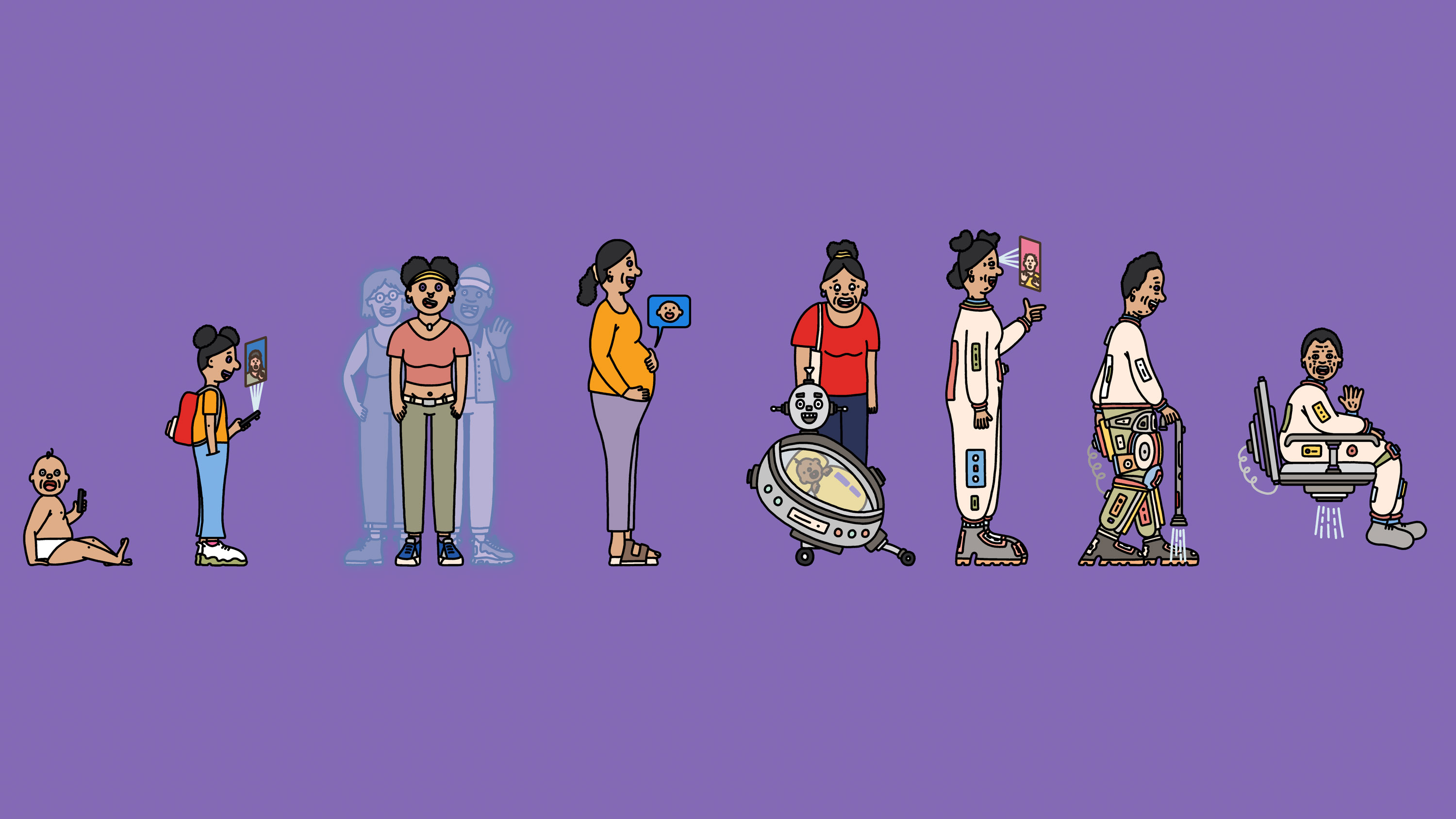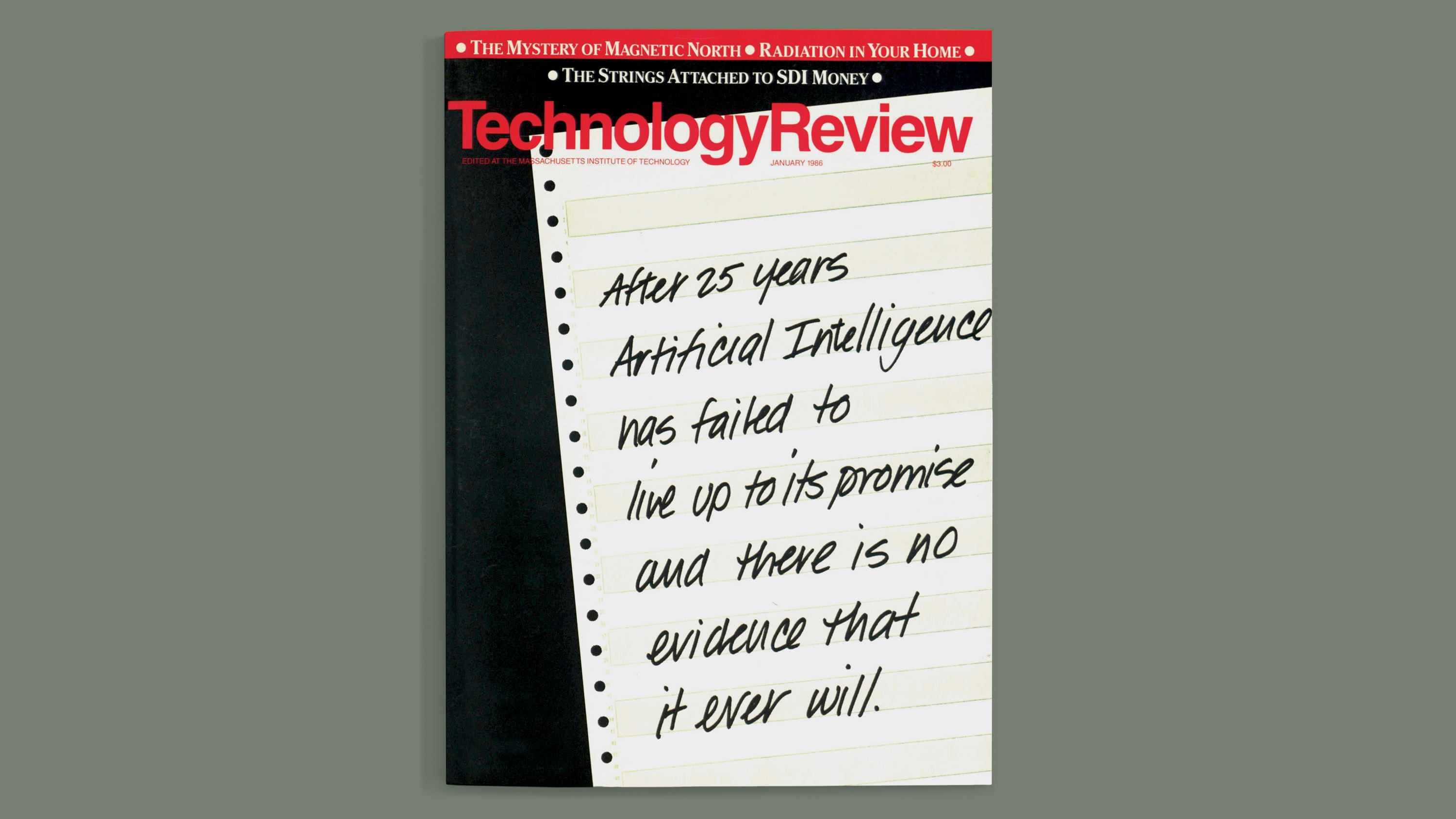This designer creates magic from everyday materials
Skylar Tibbits coined the term “4-D printing” – then immediately moved on to his next blue-sky idea.

Around 2012, at a bakery in Cambridge, Massachusetts, Skylar Tibbits noticed someone wearing a shirt with the logo of a 3D-printing company. Tibbits, a designer and computer scientist, approached her and posed a question: “Why can’t I print something that walks off the machine?”
The idea kicked off a multiyear collaboration between the industrial 3D-printing company behind the logo, called Stratasys, and Tibbits’s Self-Assembly Lab at the Massachusetts Institute of Technology. Together, they explored 3D-printed materials that, while they couldn’t walk off the machine, could change their shape or properties after being printed—a concept that Tibbits dubbed “4D printing,” where the fourth dimension is time. Today, 4D printing is its own field—the subject of a professional society and thousands of papers, with researchers around the world looking into potential applications from self-adjusting biomedical devices to soft robotics.

The concept of materials that transform—specifically, that “remember” their form after being deformed—had already been around for a couple of decades, says Thomas Gries, a mechanical engineer who was inspired by Tibbits’s innovations to conduct research on 4D textiles at RWTH Aachen University in Germany. “But to give it a name and bring it to a next stage of, let’s say, perception … this was definitely the main breakthrough by Skylar Tibbits,” he says.
Not long after 4D printing took off, Tibbits was already looking toward a new challenge: What other capabilities can we build into materials? And can we do that without printing?
Tibbits still does a lot of printing in his Self-Assembly Lab, which he founded around 2011. It recently spun out a company, Rapid Liquid Print, that can print large, stretchable products like furniture or prosthetics inside a gel bath; Tibbits also invented a novel technique called liquid metal printing that makes furniture from molten aluminum in a matter of seconds. But his research extends far beyond printing into a world that he refers to as “programmable materials”—those that can transform, sense, reconfigure in shape or property, or self-assemble without relying on robotic mechanisms.
Tibbits’s interest in transforming materials stretches back to his bachelor’s degree in architecture at Philadelphia University in the 2000s. There he became “obsessively interested” in two emerging fields: digital fabrication (in which machines like 3D printers or laser cutters use code to physically make things) and the use of computation for design. He started having digital files cut at a classmate’s family business, which had an early computer numerically controlled machine. (The classmate now co-directs the Self-Assembly Lab with Tibbits.) “We had unprecedented access to this early digital fabrication tool that our school didn’t even have at the time,” Tibbits recalls. Meanwhile, he was teaching himself to code so that he could design and fabricate things computationally.
By the time he arrived at MIT, where he earned separate master’s degrees in computer science and design computation, 3D printing had exploded in popularity. True to his nature, Tibbits was already looking to the next unknown. His start in architecture and a few stints at design firms continued to influence his curiosity: He had studied code for design and code for digital fabrication, but there was not yet a way to code for assembling parts into a whole.
“Most things that are assembled are still either by hand or it’s like a robot in a factory,” he says. “There is no elegant process for building very complicated things.”
He imagined a way to embed information into material parts so that they could build themselves. That led him to self-assembly, which refers to components that come together on their own. For example, an early project at the Self-Assembly Lab involved placing unique chair parts, each designed to fit into one precise location in a final structure, into a tank of turbulent water, which caused the parts to bump into each other and, after several hours, click into their proper spot to form a chair. Around the same time, he became interested in the idea of programmable materials, in which properties and geometry—like what a yarn is made of and how it’s woven together—can determine behavior.
Over the past decade, Tibbits’s team has worked on a long list of projects in many industries, from fashion to aerospace. He has helped make specially knitted spacesuits, developed an engine component for Airbus, and printed shoes for Converse. For BMW, he worked on printed car seats that can morph around a passenger’s body. For Google, he designed a structure for meeting spaces that can contract into the ceiling when not in use. With the National Science Foundation, he integrated dynamic braille into a textile sleeve. For Arc’teryx, he collaborated on a wearable textile prototype that he and the company’s senior design director, Greg Grenzke, tested out on a ski slope at Whistler Blackcomb in Canada. In all cases, Tibbits sees his team’s role as making the impossible possible. “That’s where we’re super, super good,” he says.
“[Tibbits is] one of those people that thinks anything is possible,” says Grenzke. “And he’s very exploratory, which I think for innovation and more big blue-sky thinking—that’s a must-have.”
It’s particularly important in manufacturing, where old methods often go unquestioned and change is difficult. “Sometimes people get a hammer, and then they just go around their whole lives looking for nails even when it’d be better to pick up a screwdriver,” says Michael Dickey, a chemical engineer at North Carolina State University in Raleigh, who has collaborated with Tibbits. “What Skylar’s done has been, I would say, fearless.”
That mindset was important to Emeco, a US-based furniture company established in the 1940s. When they were struggling to make the foam in their upholstery more sustainable, Tibbits’s team was “really good at taking a step back and saying, ‘Okay, well, what if it didn’t have to be that way?’” says Jaye Buchbinder, a product development engineer at the company. “In our heads, it’s ‘Let’s find a better foam,’ and in their heads, it’s ‘How do you not use foam?’” Buchbinder also worked with Tibbits to run a course at MIT about reimagining a chair for the future—one that could be reconfigured or infinitely recycled.
Lately, Tibbits has turned his attention to textiles—in particular, using fibers and yarns to create active structures that can sense and transform. For example, climate-adaptive clothing can open and close its “pores” in response to heat in order to regulate the wearer’s temperature. Or extreme heat can be harnessed selectively to custom-tailor a generic article of clothing. The lab, in collaboration with the fashion brand Ministry of Supply, recently showcased a knitted dress prototype that can be sized and styled in the store to fit a customer’s needs. A robotic arm applies heat to specific parts of the dress, shortening fibers and changing the garment’s shape.
In all cases, the magic lies in the process. “There’s nothing magic about the material,” says Tibbits. “Every material is active.” In fact, that property is usually considered a nuisance: think warping wood. But, he says, “if you can help guide it to do some kind of useful transformation, then that’s great.”
If it all sounds a little whimsical, it is. Tibbits sees the importance of creating something practical—the textiles are exciting to him because they can be made on preexisting factory machines, which makes them possible to scale—but he likes it when the result is also radical. One of his most out-there projects is happening on the other side of the world in the Maldives, where the team has worked in collaboration with a company called Invena on underwater structures designed to influence wave energy and promote sand accumulation in certain spots along island shores—an alternative to dredging. The idea is to harness natural forces, rather than fight them, to help protect coasts against erosion and rising sea levels.
The way Tibbits sees it, his position in academia allows his lab to “fail often and, frankly, waste time and money”—resources that most companies could not afford to waste. He sees it as his obligation as a designer to spend time considering the radical and irrelevant.
“Sometimes they’re playful, sometimes they’re weird, sometimes they’re funny,” he says of his designs. “Hopefully, eventually, they’re useful, they’re helpful, they’re important.”
Anna Gibbs is a freelance science journalist based in New York City.
Deep Dive
Culture

Happy birthday, baby! What the future holds for those born today
An intelligent digital agent could be a companion for life—and other predictions for the next 125 years.

The race to save our online lives from a digital dark age
We’re making more data than ever. What can—and should—we save for future generations? And will they be able to understand it?
Stay connected
Get the latest updates from
MIT Technology Review
Discover special offers, top stories, upcoming events, and more.

